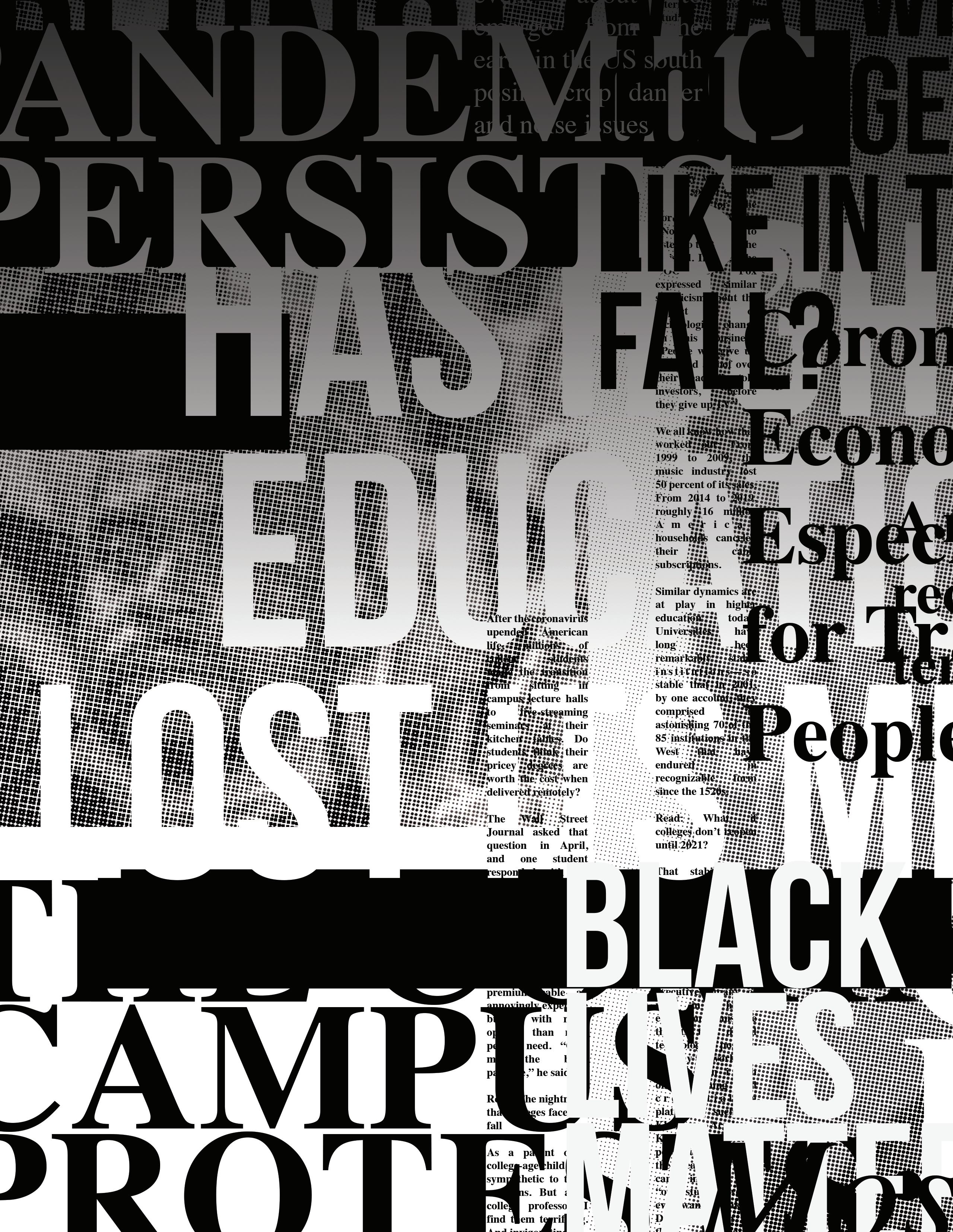
8 minute read
FROM PERSPECTIVES TO PRACTICE
On average, American adults process 34 gigabytes (more than 100,000 words) of information daily. Our lives are flooded with Google searches, YouTube videos, Facebook and Twitter posts, and a never-ending feed of suggested reading, watching, and listening. Media consumption is a constant task — conscious and subconscious — to separate the trivial from the significant, fact from opinion, process new information, and discern meaning.
Perspectives provides a forum for ideas, opinions, and experiences that is thoughtprovoking and innovative; shares new information; highlights best practices; and challenges thought. As a quarterly publication, we recognize Perspectives is a microscopic part of your general — and professional — information consumption reality. We want to ensure the content published in Perspectives is communicated, positioned, and promoted in a way to maximize impact by encouraging continued discussion and informing practical application.
Advertisement
“From Perspectives to Practice” aims to provide a guide for learning through a focus on continued discussion, engagement, and action. You’ll find this section at the end of each issue. We hope it helps you critically examine the viewpoints offered, make meaning of the content, and identify ways for further engagement through applying the ideas in these pages to your everyday practice.
MAKING THE MOST OF THIS PUBLICATION
1. Engage with the content : Read the article more than once, and as you are reading, do the following:
• Identify one important concept, research finding, theory, or idea you learned.
• Determine why you identified that piece of information as important.
• Apply what you learned from the article to some aspect of your work.
• Take it a step further: What question(s) does the article raise for you? What are you still wondering about? What do you agree or disagree with?
2. Reflect : What stood out to you in each article? What new information was presented? Did you experience any “aha” moments?
3. Share & Discuss : Take those highlights and insights and discuss them with friends. Share them with stakeholders. Create an idea pipeline and see how the concept(s) evolve.
4. Write About It : Did something resonate with you? Frustrate you? Did reflection lead to brilliance? Put those thoughts into words and add your own viewpoints to the discussion.
5. Put it into practice : What is a key takeaway that can inform your work? How can you take that information and apply it? What is realistic? What is a longer term goal?
*Adapted from the 2017 Unmistakable Creative post, “A Quick and Effective Guide to Remember and Apply What You Read.”
Show Me Your Policies and I’ll Verify Your Statement
Discussion Question: Reflect upon a time your employer or membership organization issued a statement on current or ongoing injustice. How was that statement constructed? What action coincided with or followed the statement? Was it sustained? Did it move beyond the surface? If not, what opportunities exist to bring light to that gap now and in the future?
Discussion Question: The author directly addresses three components of a standard public statement about injustice — the message, the culture, and the money. Reflect upon these components as they exist within your place of employment and/or membership organization. What is the message? What is the culture? Where is the money? What do the answers to those questions illuminate?
Mental Health, COVID-19, and Advising Strategies: Using Member Perceptions From the Fraternity and Sorority Experience Survey (FSES) To Inform Practice
Discussion Question: Consider the communities you work or volunteer for. Does the data showcased in this article reflect or relate to what you observe in those communities? Why or why not?
Discussion Question: One contributor to this article states, “It is time to move past doing mental health awareness in organizations and start using programs that teach members and leaders skills to address mental health challenges.” Consider the programming your office, institution, and/or organization offers or connects students to regarding mental health. Is it awareness-based or skill-based? How can you encourage a shift to more skill and strategy-based approaches to mental health education?
Vice President of Student Affairs Round Table: A Discussion About Making Certain Decisions Amidst Uncertainty
Discussion Question: This article illustrates the varying degrees of understanding, knowledge, and involvement of stakeholders in crisis. If you are a senior leader, consider the perspectives of new and midlevel professionals amidst crisis. How can that shift in perspective help inform your thoughts and decision-making? If you are a new or mid-level professional, consider the perspectives of senior level professionals amidst crisis. How can that rotation of perspective help inform your thoughts and decision-making?
Discussion Question: Leadership and decision-making in times of crisis is complex and multi-faceted. In this article, contributors speak to how they work to instill confidence in their teams while making decisions. Consider this question within your own sphere of influence: how do you gain buy-in and instill confidence in your stakeholders during times of heightened emotion and complexity?
Inclusion With A Caveat: Sexuality, Gender Identity & Expression Within Fraternity and Sorority Life
Discussion Question: The author questions if fraternity and sorority organizations that espouse diversity, equity, and inclusion policies are simply engaging in performative acts. When it comes to inclusion tied to sexuality and gender identity, how is your office, institution, and/ or organization engaging in this topic? Is it performative? Is there engagement? Whatever the answer, what drives that action (or lack of action)?
Discussion Question: The author shares a testimonial of how he found belonging within an organization that traditionally is not expected to provide such an experience for someone that identifies outside of its prescribed norms. Consider other types of lived experiences that may or may not be shared in the context of these organizations. As professionals and volunteers, how can these stories be amplified to help individuals across identity spectrums see the fraternity and sorority experience as a space for them?
Excerpt: Embrace and Reform
Discussion Question: The author suggests we are currently in hazing’s prohibition era and states, “Just like America’s historical prohibition of alcohol, we have not stopped the production of hazing. Instead, we have ensured it can be produced in a way that is wholly unregulated and reckless.” Do you agree or disagree? Why?
Discussion Question: This article proposes a shift from a “moralize and suppress” paradigm within anti-hazing advocacy to one focused on reforming hazing practices and ensuring informed consent. Consider both frameworks. What potential benefits and concerns exist within the “moralize and suppress” paradigm the author describes? What potential benefits and concerns exist within the “embrace and reform” framework outlined in this article?
Examining the Disconnect: If Students Doubt the Benefits of Hazing, Why Do They Stay?
Discussion Question: Research shows students’ rationalization of hazing experiences exists parallel to skepticism about the impact of hazing. Consider this in the context of the communities you work or volunteer with. Do you see this potential disconnect within those communities? What are examples?
Discussion Question: The author outlines several common rationalizations students make to justify remaining in an organization that hazes. Have you encountered these mindsets in your work or volunteering? What steps did you take to help students question and deconstruct them?
You Are Flammable: Creating a Burn Resistant Career
Discussion Question: The author refers to “burn events” as “short periods of time where career or personal experiences lead a professional to feel worn down, apathetic to their role, or a desire to create distance from that role.” Reflect upon your career. Can you identify specific “burn events” as described? What response did you have to those burn events?
Discussion Question: The author presents a model to help individuals address burn events before they lead to burnout. Think about a past or current burn event you experienced (or are experiencing). Apply the model — Observation, Preparation, and Recovery — to the event. Did reflecting upon and applying this model help develop a strategy for overcoming the burn event?
Discussion Question: The author reflects upon significant times of conflict that contributed to the evolution of the University of Michigan - Ann Arbor fraternity/sorority community. Consider the communities you work or volunteer with. What significant times of conflict have shaped the current makeup and culture of those communities? Discussion Question: Consider how you manage conflict and apply the components outlined in this article. Does your current method for addressing and working through conflict align? If not, what adjustments can you make or help others make the next time conflict rolls around?
There is Life Outside of Your Workplace
Discussion Question: The author highlights how strong affinity within the fraternity and sorority industry can lead to an inability to disengage from work. Consider this in your own life or in the context of those you work with. What do you notice? How might this play out and what is its potential impact on personal and professional well being?
Discussion Question: The article highlights how the average American’s social engagement has drastically changed over the last century. What does this shift in social engagement — to more individualized experiences and parasocial relationships — mean for a field built on community and shared social experiences? What does this mean for individual relationship building and establishing true belonging within an increasingly connected, yet disconnected, world?
Continued Action:
Read or consider contributing to upcoming editions of Essentials and Oracle.
Select an article to discuss at an upcoming staff or division meeting, council meeting, with students, etc. — use it as a discussion topic to kick off the meeting and then share the conversation’s outcome with the hashtag #AFAPerspectives.
Review the Association of Fraternity/Sorority Advisors Core Competencies and identify ways the content relates or doesn’t relate — how can you use the information gained to continue to build your professional competence?
Circulate an article that resonates with stakeholders based on your campus, organization, vendor, or company’s circumstances.
Look outside of the industry — what concepts relate, challenge, or inform our thinking and practice? Who else can we learn from?
Reflect and write for a future issue: Email borton@deltau. org or brookegoodman01@gmail.com with questions, article ideas and submissions.
Stay curious: Ask questions, challenge ideas, and see how this content can spark ongoing thought and practice.











